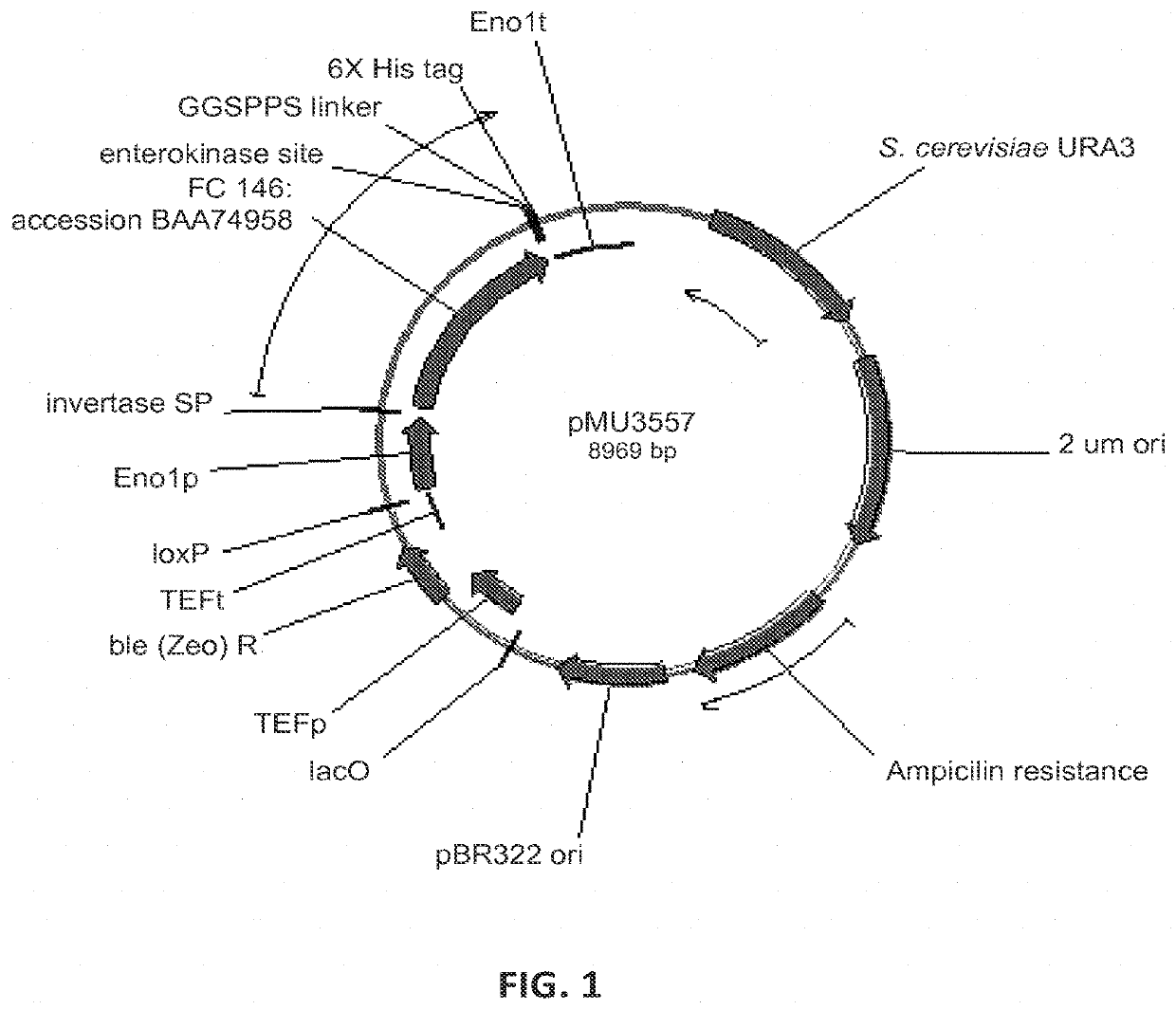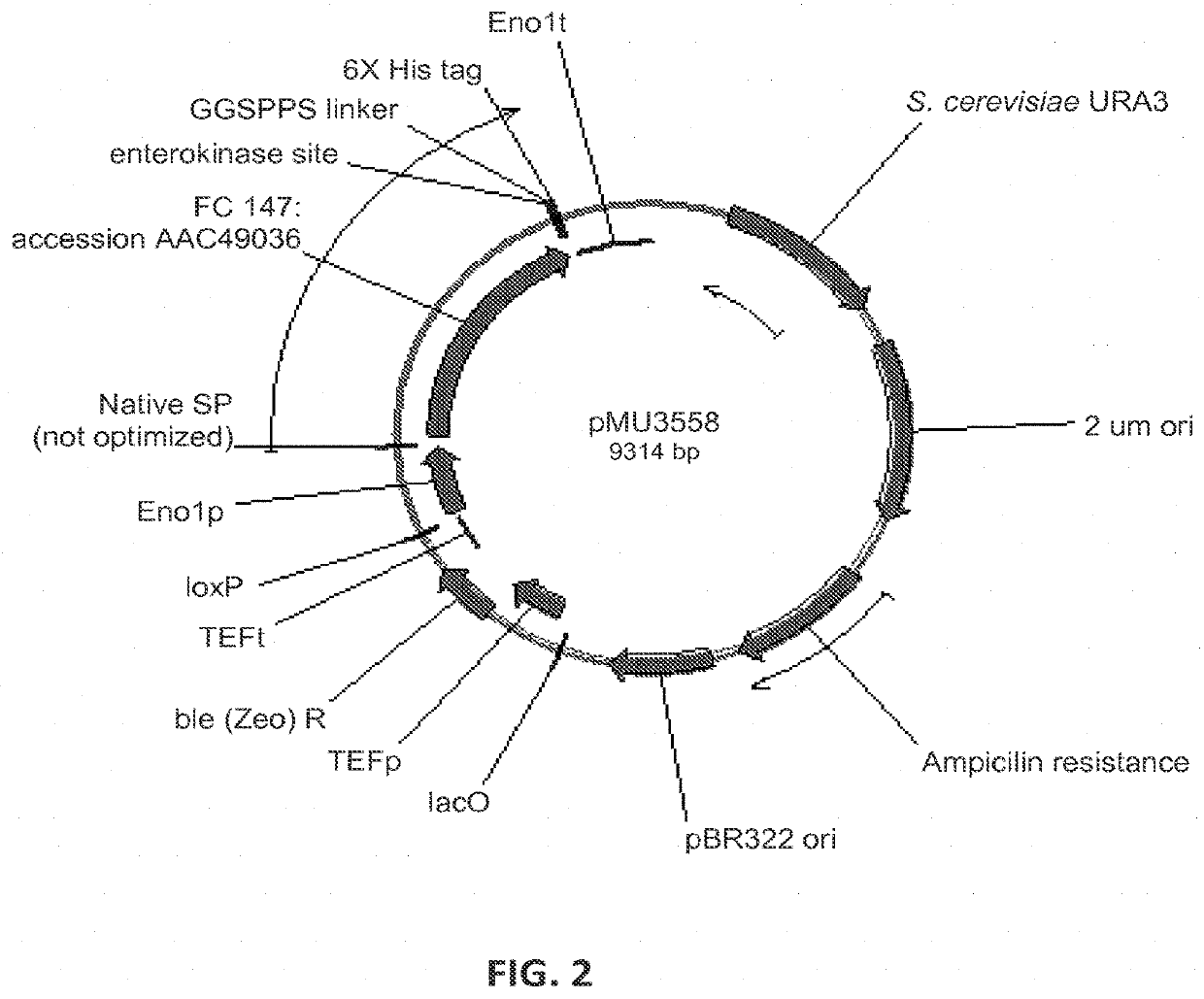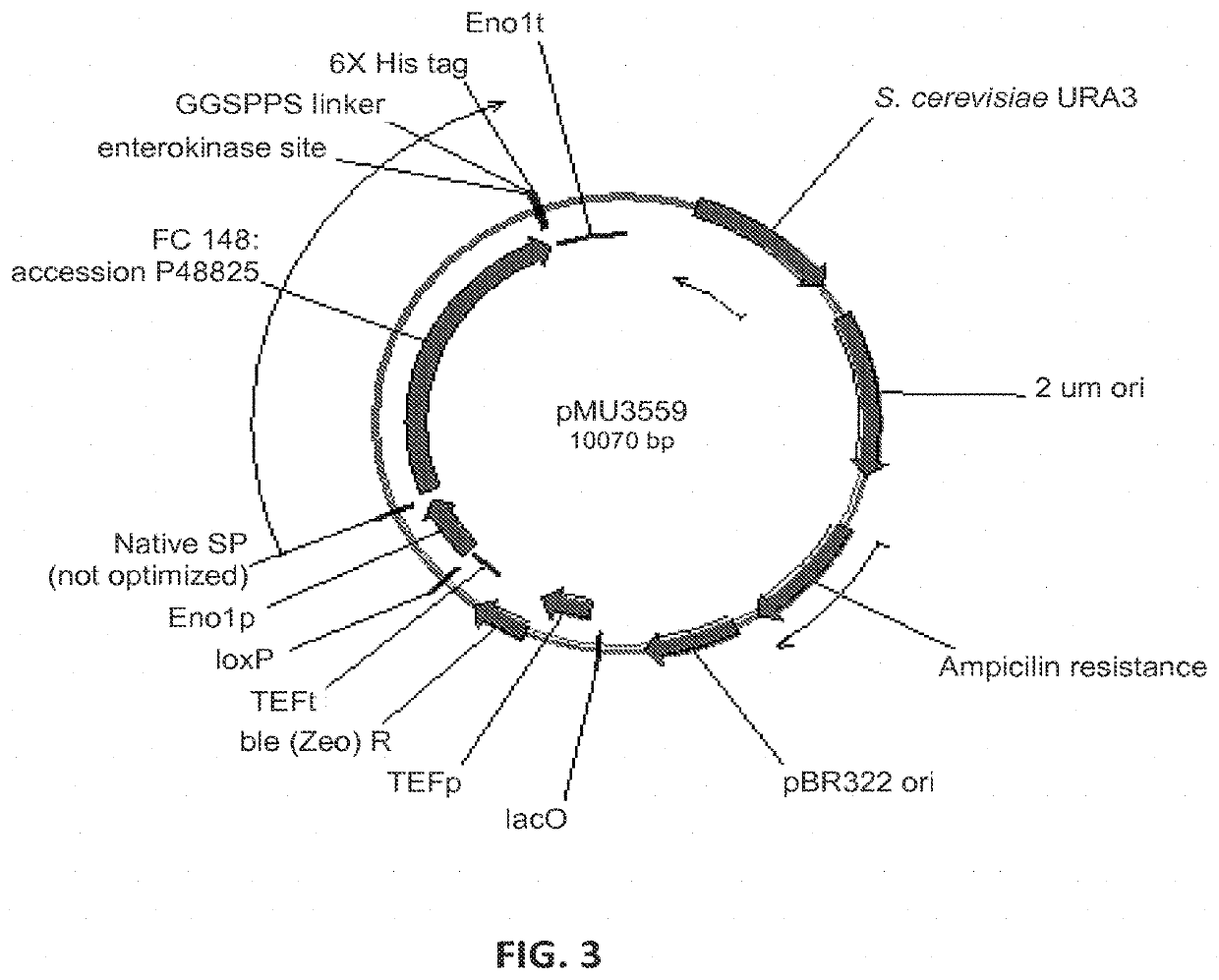Expression of beta-glucosidases for hydrolysis of lignocellulose and associated oligomers
a technology of betaglucosidases and lignocellulose, which is applied in the field of expression of betaglucosidases for hydrolysis of lignocellulose and associated oligomers, can solve the problems of inability to achieve fermentation of amorphous cellulose, lack of low-cost technology for overcoming the recalcitrance of these materials, and historically proven hydrolysis problems
- Summary
- Abstract
- Description
- Claims
- Application Information
AI Technical Summary
Benefits of technology
Problems solved by technology
Method used
Image
Examples
example 1
Screening of Yeast Produced Beta-Glucosidases for Efficient Cellobiose and Oligomer Hydrolysis
[0248]In order to find beta-glucosidase (BGL) enzymes that are well expressed in Saccharomyces cerevisiae, and highly active on hardwood derived substrates, several BGLs were designed and synthesized by DNA 2.0. The enzymes and sequences tested are below in Table 4.
TABLE 4Beta-glucosidase enzymes tested for expression in yeastCazySource(FC)#familyE.C. #ActivityOrganismAccession #Strain #Plasmid #141GH33.2.1.21Beta-SaccharomycopsisP22506M1429pMU1172*glucosidasefibuligera146GH13.2.1.21Beta-Humicola griseaBAA74958M4860pMU3557glucosidase147GH13.2.1.21Beta-CandidaAAC49036pMU3558glucosidaseWickerhamii148GH33.2.1.21Beta-AspergillusP48825M4861pMU3559glucosidaseAculeatus149GH33.2.1.21Beta-AspergillusXP_001816831M4862pMU3560glucosidaseoryzae150GH33.2.1.21Beta-PenicilliumADB82653M4863pMU3561glucosidasedecumbens151GH33.2.1.21Beta-ChaetomiumXP_001229937M4864pMU3562glucosidaseglobosum152GH33.2.1.21Beta-N...
PUM
 Login to View More
Login to View More Abstract
Description
Claims
Application Information
 Login to View More
Login to View More - R&D
- Intellectual Property
- Life Sciences
- Materials
- Tech Scout
- Unparalleled Data Quality
- Higher Quality Content
- 60% Fewer Hallucinations
Browse by: Latest US Patents, China's latest patents, Technical Efficacy Thesaurus, Application Domain, Technology Topic, Popular Technical Reports.
© 2025 PatSnap. All rights reserved.Legal|Privacy policy|Modern Slavery Act Transparency Statement|Sitemap|About US| Contact US: help@patsnap.com



